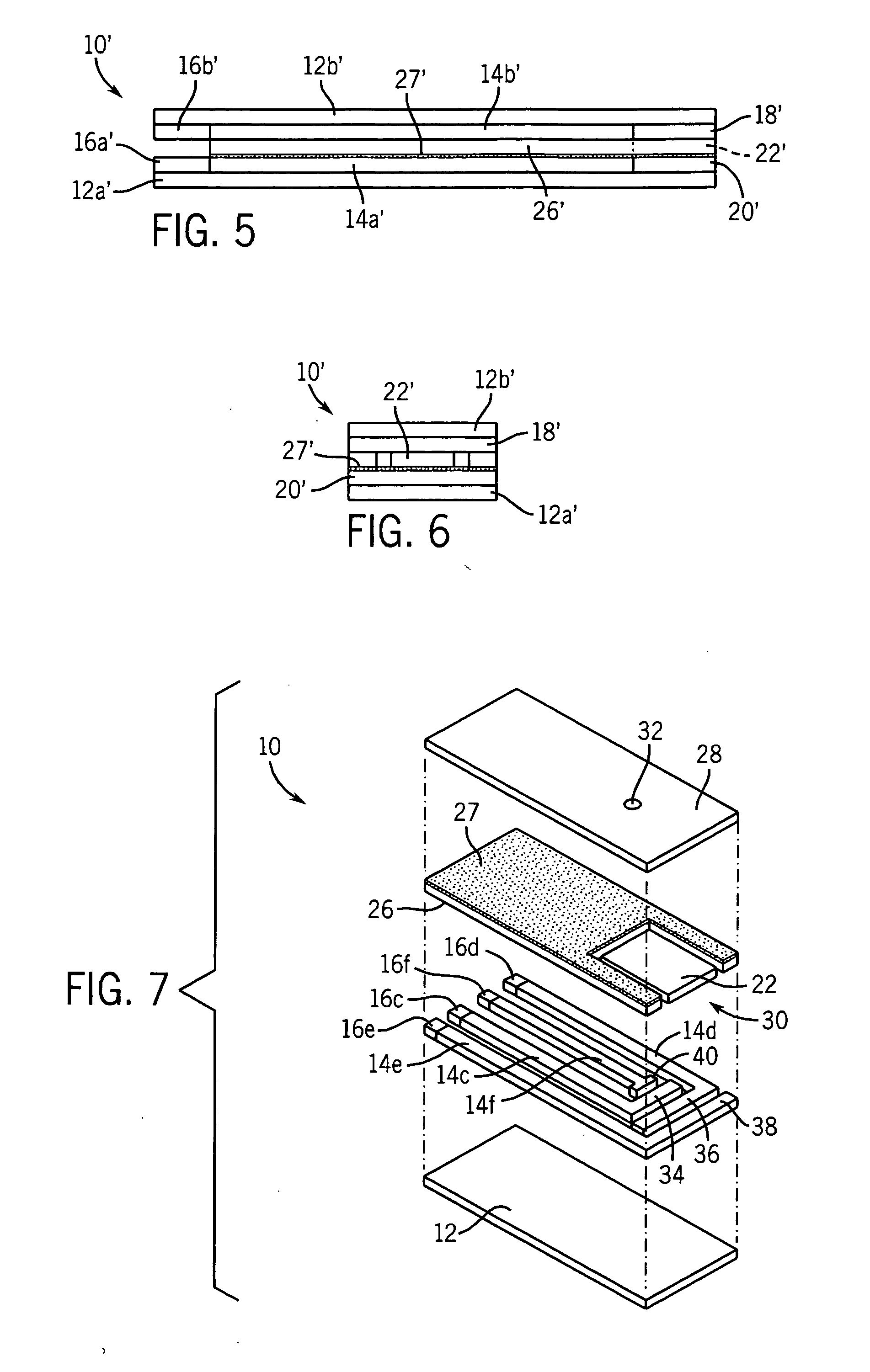Low volume electrochemical biosensor
a biosensor and low-volume technology, applied in the field of electrochemical sensors, can solve the problems of inability to accurately register the reagent relative to the working electrode, limited electrode size reduction, and higher background signals, and achieve the effects of improving the stability of the enzyme in the ink, not significantly altered, and easy incorporation
- Summary
- Abstract
- Description
- Claims
- Application Information
AI Technical Summary
Benefits of technology
Problems solved by technology
Method used
Image
Examples
example 1
This example illustrates how a mediator can be incorporated into a conductive track of a biosensor. Ink containing carbon in an organic vehicle was mixed with 2% (w / w) ferrocene. The ink was used to print two tracks on an insulating substrate. A mixture of silver and silver chloride was printed so as to completely cover one of the tracks to form a dual-purpose reference / counter electrode and to partially cover the other track to form a working electrode. The working electrode had a small gap between itself and the silver / silver chloride coating so that silver would not contaminate the reaction zone of the working electrode. A perforated material, a surfactant (FC170, commercially available from 3M) coated mesh (NY64, from Sefar America), was deposited over a portion of both electrodes. An insulating layer, “POLYPLAST”, was printed over the conductive layers so as to expose an area that would make removable contact with a measuring device and an area where the liquid sample is to be...
example 2
This example is identical to Example 1, with the exception that the mediator used was tris (1,10-phenanthroline-5,6-dione) manganese (II) chloride and the enzyme used was pyrroloquinoline quinone-dependent glucose dehydrogenase.
example 3
This example is identical to Example 2, with the exception that the mediator was added to the carbon-containing ink. Nicotinamide adenine dinucleotide-dependent glucose dehydrogenase and nicotinamide adenine dinucleotide [2.5% (w / w)] were deposited on the working area.
PUM
| Property | Measurement | Unit |
|---|---|---|
| area | aaaaa | aaaaa |
| volumes | aaaaa | aaaaa |
| thickness | aaaaa | aaaaa |
Abstract
Description
Claims
Application Information
 Login to View More
Login to View More - R&D
- Intellectual Property
- Life Sciences
- Materials
- Tech Scout
- Unparalleled Data Quality
- Higher Quality Content
- 60% Fewer Hallucinations
Browse by: Latest US Patents, China's latest patents, Technical Efficacy Thesaurus, Application Domain, Technology Topic, Popular Technical Reports.
© 2025 PatSnap. All rights reserved.Legal|Privacy policy|Modern Slavery Act Transparency Statement|Sitemap|About US| Contact US: help@patsnap.com



